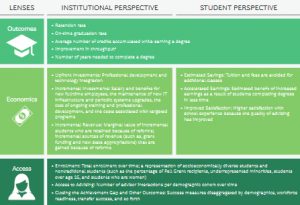For US colleges and universities, the quest to deliver a rewarding, high-quality postsecondary education has never entailed such high stakes. After decades of stagnant improvement, institutions are facing growing calls for accountability and performance. At the same time, persistent achievement gaps and the rising cost of higher education necessitate a laser-like focus on student completion. Colleges and universities today must strive to deliver student outcomes despite a cacophony of external challenges, including declining enrollment, shrinking state funding, and students with increasingly diverse needs and demands on their time. These challenges have compelled some institutions to seek new strategies—particularly for core functions such as academic advising—to ensure student success.
In partnership with the Bill & Melinda Gates Foundation and NASPA, BCG recently studied the return on investment of broad-based advising reforms—those that affect all students in a particular class. The study focused on Florida State University, Georgia State University, Montgomery County Community College, and the University of Texas at Austin, four institutions that have a strong track record of implementing changes to enhance their advising programs. The reforms, which helped simplify students’ paths to a degree, also enabled the institutions to engage students early and often in a dialogue that was tailored to each individual’s diverse needs. And, thanks to a suite of technology tools, such as those for workflow automation and predictive analytics, the reforms allowed advising interactions to be easily and proactively initiated.
Our study found that broad-based advising reforms significantly improved student outcomes for a relatively low annual incremental investment. Specifically, the reforms contributed to an increase in on-time graduation rates of as much as 21 percentage points. (Graduation rates are defined as the proportion of students who graduate in four years from four-year institutions or in two years from two-year institutions.) At the same time, the reforms required a relatively modest and sustainable annual incremental investment of less than $100 per student—an amount that was largely driven by investments in additional advising personnel rather than technology infrastructure.
This report identifies the drivers of academic and economic returns for the institutions in our case study. On the academic side, the primary drivers of returns include simplifying students’ paths to a degree or credential by using tools such as major maps (or degree maps) and increasing right-time access to advising using early-alert systems and other institutional processes. The primary drivers of economic returns include strategically allocating advisors’ time and differentially lowering advising ratios for higher-need students. We also document the critical motivations for change and the strategic choices that each school made in designing and executing reform.
By Allison Bailey Nithya Vaduganathan Tyce Henry Renee Laverdiere
